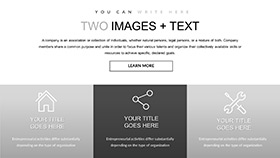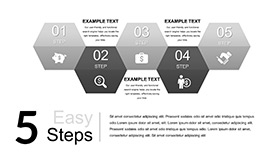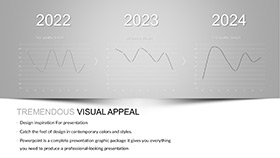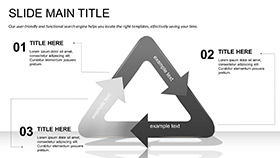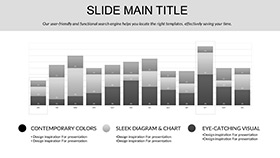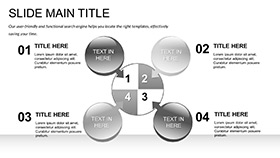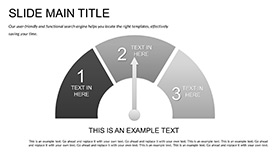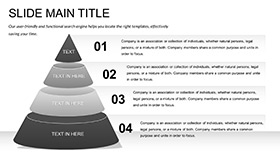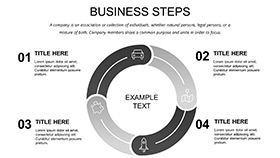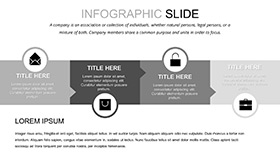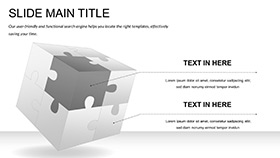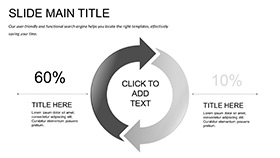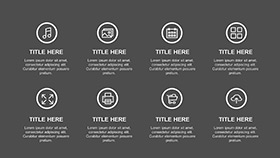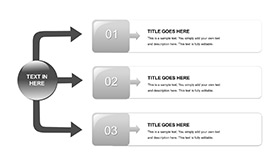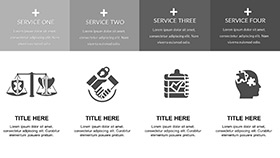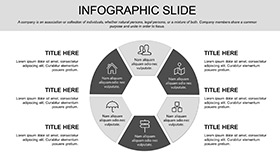Picture a conference room where the mysteries of colonic absorption unfold not in dense textbooks, but on sleek slides that guide your audience through the large intestine's vital rhythms. The Large Intestine Keynote template delivers exactly that, with 28 diagrams spanning three masters and backgrounds in seven color schemes, tailored for gastroenterologists, biology instructors, and health educators seeking to demystify this powerhouse of water reclamation and waste formation.
From haustra pouches to microbial ecosystems, every element is editable in Keynote 2016+, allowing you to overlay endoscopy images or fermentation data without breaking stride. The professional greens and earth tones ground your content in organic authenticity, while clean lines ensure focus on functions like peristalsis or electrolyte shifts. It's for those high-stakes pitches where clarity on topics like diverticulitis can sway funding or inform care plans.
Students wrestling with gut microbiome concepts will thank the layered flora diagrams, while clinicians streamline polyp detection overviews with built-in timelines. In wellness seminars, the template's approachable visuals make fecal incontinence discussions less daunting, fostering open dialogue through relatable schematics.
Key Design Elements for Impactful Slides
Three masters offer header variations - simple titles for overviews, detailed for deep dives - paired with backgrounds that evoke intestinal contours subtly. The 28 diagrams dissect anatomy from cecum to rectum, vectors ensuring scalability for large venues.
- Adaptive Illustrations: Morph villi representations to show absorption variances across segments.
- Visual Data Tools: Flowcharts for transit times, customizable for dietary impact studies.
- Relevant Icons: 45+ gut-specific symbols, like bacteria clusters, for accentuating microbiomes.
Hyperlink hotspots embed video clips of motility, enhancing Keynote's native capabilities for hybrid events.
Your Roadmap to Polished Presentations
- Foundation Choice: Select the textured background to mirror mucosal folds naturally.
- Content Integration: Input biopsy results into the adenocarcinoma slide, tinting for stage distinctions.
- Motion Mapping: Sequence haustral contractions with Keynote builds for dynamic progression.
- Final Tune: Align with remote cues, verifying contrast for diverse lighting.
Such steps condense creation, spotlighting innovations like probiotic effects on transit.
Versatile Uses in Health and Education
A GI fellow crafting journal club slides might use the template's crypt-villus diagram to layer genetic markers, adjacent graphs plotting prevalence. In high school bio classes, it simplifies teaching defecation reflexes, with interactive blanks for group work. Pharma teams demo laxative mechanisms via segmented colon models, revealing site-specific actions crisply.
Outpacing basic templates, it maintains anatomical fidelity - teniae coli rendered accurately - avoiding the pitfalls of generic shapes.
Specific Scenarios for Everyday Impact
- For Teachers: Lesson plans on IBS, with editable symptom maps for student exploration.
- For Doctors: Consults on colorectal screening, timeline visuals easing patient prep.
- For Researchers: Grant narratives with microbiome pie charts tied to organ cross-sections.
These applications reveal its knack for bridging science and storytelling.
Precision Crafted for Gut Health Narratives
Drawing from endoscopic visualization standards, slides ascend from gross anatomy to cellular, much like Netter's atlases. Schemes toggle for accessibility, including high-contrast for color-blind viewers. Insider move: Link the appendix slide to builds unveiling evolutionary remnants, sparking engaging asides.
Output to interactive PDFs for self-paced learning, or vector exports for publications. The polish - flawless on 4K - that inspires confidence.
Streamline your digestive discourse. Grab the Large Intestine Keynote template for $22 and digest success.
Frequently Asked Questions
How detailed are the anatomical diagrams?The 28 diagrams provide in-depth views of large intestine structures and functions, fully editable for specifics.
Does it support video embeds?Yes, via hyperlinks and placeholders designed for seamless Keynote media integration.
Are there options for different themes?Seven color schemes offer variety, from clinical neutrals to educational vibrants.
What versions of Keynote work best?Optimized for 2016+, with broad macOS compatibility.
Can icons be swapped out?Certainly - the library allows easy replacements or additions from your assets.
Is it geared toward beginners?Its structured flow makes it approachable, scaling with user expertise.









